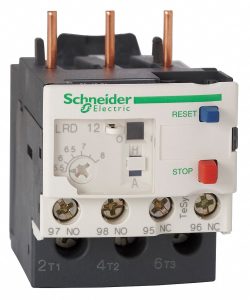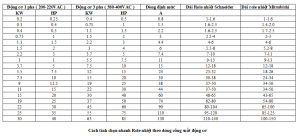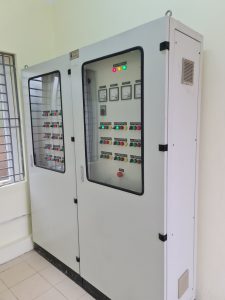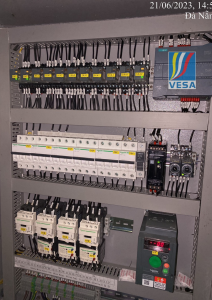Thermal Relay is an electrical device that automatically switches off the contacts when heat is applied to the metal rods and causes them to expand. This power tool is applied in a variety of different electrical systems from civil to industrial. In the power system, the thermal relay plays the role of overload protection for electrical equipment and the electrical system to operate stably. Magnetic starter and thermal relay is a solid protection device for the entire electrical network of the system.

1. How to calculate and choose Thermal Relay according to motor power
In fact, the appropriate choice is to choose the rated current of the Thermal relay with the rated current of the electric motor to be protected, the Relay will operate at the value (1.2 1.3) Idm . Besides, the working mode of the load and the ambient temperature must be considered.

2. Matters needing attention when choosing Thermal Relay
– Working line
– Product line suitable for contactor (each type of thermal relay is compatible with a corresponding contactor line, the manufacturer has recommended selection right on the product catalog).
Similar to the current calculation for contactor selection, we calculate the rated current, then choose as follows:
– Idm = Itt x 2
– Iccb = Idm x 2
– Ict = (1.2-1.5) Idm
We calculate in the specific example as follows:
There is a 3-phase, 380V, 3kW motor load, calculate the rated current according to the following formula:
Itt = P/ (1.73 x 380 x 0.85) where the cosphi is 0.85.
We have Itt = 3000/(1.73x380x0.85) = 5.4A
The thermal relay line is selected with a starting factor of 1.2-1.4 times Idm, we choose the thermal relay line as:
Idm = 1.4xItt = 1.4×5.4 = 7.6A.
So the current of the thermal relay we choose is 8A. Thermal relays often have a current adjustment range, set the working current, we can choose the residual current range to be adjustable when using real loads.
3. Some notes when choosing Thermal Relay
It is recommended to choose Thermal Relay with an adjustment threshold corresponding to the operating range of the motor or slightly higher. The lowest adjustment threshold of the Thermal Relay should be lower than the mid-range in the motor operating range. The maximum adjustment threshold of Thermal Relay must be higher than the upper limit of the motor operating range.
Some types of Thermal Relayshave a pin that connects to the contactor (usually small thermal relays), so it can only fit the correct contactor that is compatible with it. For example, Mitsubishi’s TH-T18 thermal relay line can only be used for Mitsubishi contactors S-T10, S-T12, S-T20.
Some high-end thermic relays models have built-in phase loss protection. However, this type is currently not commonly used in the market. Therefore, separate phase loss protection relays should be used.
Above is our detailed sharing on how to choose a thermal relay for the device for your reference. Hopefully with the above sharing, readers have got detailed answers as well as understood how to choose Thermal Relays to ensure the safety of their devices and systems.
Our company with more than 15 years of experience in the field of wastewater treatment, is proud to be a prestigious and leading unit in the Vietnamese market. Coming to VESA, you will be absolutely committed to the best quality, products and after-sales service available today. Contact us immediately at Hotline 0904 571 488 to receive the most thoughtful and dedicated advice.







